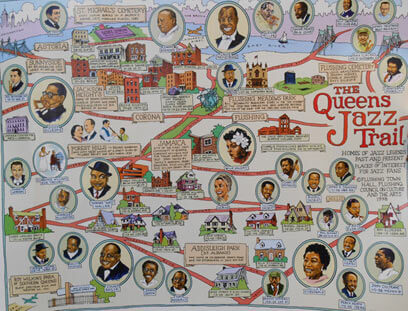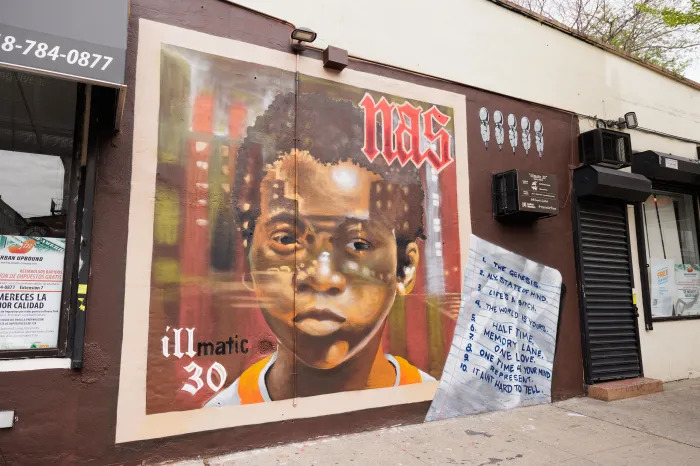By Merle Exit
Steinway is synonymous with the grandest of pianos and its factory, Steinway & Sons, helped to put Astoria on the map.
Jazz great Duke Ellington was known for performing on a Steinway grand piano.
Even today, Jazz at Lincoln Center All Stars, a 17-piece orchestra hand-picked by Wynton Marsalis, utilizes a Steinway both at Lincoln Center as well as in its collaboration on the new Broadway show, “After Midnight.” The musical celebrates Ellington’s years at the Cotton Club using his original arrangement. The timeless tunes are set against a narrative of Langston Hughes poetry.
In fact, the Langston Hughes Community Library and Culture Center in Corona is on another map: the Queens Jazz Trail.
Created by the Flushing Council on Culture and the Arts, the map depicts locations around the borough linked to some of the music genres biggest stars.
“The history of jazz is associated with many cities, districts and streets. There is New Orleans’ Basin Street, Memphis’ Beale Street, the Southside of Chicago, Kansas City, Harlem, Greenwich Village and many others,” Marc H. Miller, projector director of the Jazz Trail’s map, wrote in a history about the map’s creation. “One place though conspicuously absent in most accounts of jazz history, despite its many links to the music, is New York City’s borough of Queens.
“It will come as a surprise to most that since the 1920s, Queens has been the home of jazz, the residence of choice for hundreds of jazz musicians, including such all-time notables as Louis Armstrong, Fats Waller, Billie Holiday, Ella Fitzgerald and Dizzy Gillespie.”
The Queens Jazz Trial spotlights what appears to be a neglected history that began in 1923 when music publisher and entrepreneur Clarence Williams and his wife, singer Eva Taylor, purchased a home as well as eight lots along 108th Avenue in what was “rural Jamaica.”
It was not long after that the open spaces of Jamaica, St. Albans, Hollis and neighboring towns became home for other musicians like piano player James P. Johnson and composer Perry Bradford.
With the growth and popularity of jazz in the 1940s and 1950s, more musicians purchased homes, especially in the small community of Addisleigh Park in St. Albans. Its long list of famous residents included Fats Waller, Count Basie, Lena Horne, Ella Fitzgerald and Mercer Ellington, Duke’s son.
Miller includes quotes from jazz musicians about their lives in Queens.
“In no time at all we had assembled the greatest community of black people in the country outside Harlem,” saxophonist Illinois Jacquet said about St. Albans’ Addisleigh Park. “We built a neighborhood to be proud of, a monument to black achievement.”
Many key players of “swing,” including Benny Goodman, Glenn Miller and Woody Herman, lived in the new apartment buildings of Jackson heights.
Red Nichols and Red Norvo had houses in Forest Hills. Louis Armstrong purchased a home in Corona in 1943, which is now the Louis Armstrong House and Archives. Billie Holiday moved to Queens at end of the 1940s, living first in a house in Addisleigh Park and later, in a modest second floor apartment in the then new housing project of Parsons Gardens in Flushing.
Dizzy Gillespie also lived in Parsons Gardens, prior to purchasing a large brick building in Corona, a few blocks away from Armstrong. Let’s not forget Tony Bennett, born in Astoria, who founded the Frank Sinatra School of Arts located in his hometown.
But it’s not just not residences included on the map. Besides the Langston Hughes center, other highlights include Carmichael’s Diner, the Black Spectrum Theatre Company and York College’s Black American Heritage Foundation Music History Archive, all located in Jamaica.
Visitors can also contact Flushing Town Hall at (718) 463-7700 to schedule an escorted tour of the Queens Jazz Trail.






























